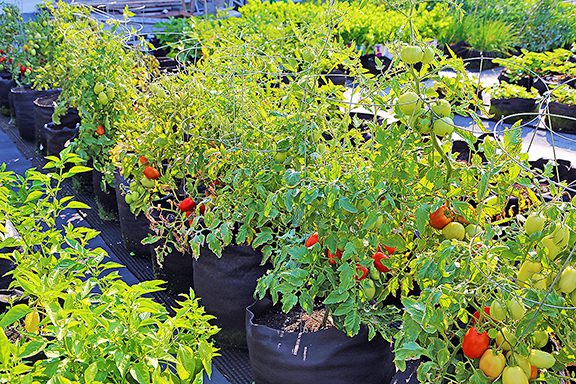Growing Great Tomatoes
Growing Great Tomatoes
- To be most productive, tomato plants need full sun, rich soil, regular watering, and supplemental nutrients.
- Tomato plants can be put into the garden right up until Forth of July but don’t plant too early: nighttime temperatures should be consistently above 50 degrees before planting. On the Cape, this is in late May.
- The organic matter that you dig into the soil also helps to ensure unblemished produce. Tomato plants growing in dry, sandy soil are prone to blossom end rot, a condition that causes large black scabs on the bottom of the fruit. Blossom end rot is not caused by a lack of calcium; it is caused by stress. The most common cause of blossom end rot in our region is root injury from shallow or infrequent watering and stress from winds. Most tomatoes grow out if it and later fruit is fine.
- You want your tomatoes to have a deep root system. Amend your soil by digging compost and composted manure into an area that’s at least a foot deep and three feet in diameter. The compost used can be homemade from kitchen scraps, lawn clippings, leaves or seaweed. If you can’t make your own, or if you find it more convenient to apply amendments from a bag, most garden centers sell good quality bagged compost. Composted manure can also be purchased in bags. It’s sometimes possible to find sources of bulk manure, but before purchasing manure by the yard, be sure that it’s well aged. Fresh manure can stunt or kill young plants.
- An organic fertilizer should be dug into your soil along with the amendments. Tomato plants are heavy feeders, and using a combination of a slow-release, organic fertilizer that is dug into the soil, along with a series of liquid feeds, will keep your plants growing well. Follow instructions on label & if you are using a synthetic fertilizer (Miracle Gro etc) never fertilize a thirsty plant.
- Cutting off lower leaves can also help with disease control. Leaf diseases such as early blight plague many tomato growers, and the spores for this disease, and other fungal problems, lie in the soil. Remove the lower sets of leaves that would otherwise touch the soil and immediately cover the area around the plant with a layer of mulch.
- During hot, sunny weather, water your tomato plants well every four days, and less frequently in cooler, cloudy periods. In the tomato garden, as in all our gardens, the mantra should be: “A good deep soaking less often is better than a little every day.” What is a deep soaking? Enough to wet the soil at least 12” down (1” in rain gauage.)
- You don’t have to remove “suckers” – on indeterminate plants these grow on to develop blossoms and tomatoes.
- Support tomatoes with sturdy sticks, wire cages etc. For indeterminate plants, make these at least 5’ tall! The small size “tomato cages” sold are pretty useless – use large supports.
- Watch for: Disappearing leaves or what looks like large pieces of black pepper on your plants. This is frass (larvae poop) and indicates Tomato Horn Worm. Hand pick and squash them. (gross, I know)
- Colorado Potato Beetle – black and yellow striped. Use Spinosad to kill larvae, hand squash adult beetles.
- Black spots on lower leaves that soon yellow: early blight. Start spraying either with a copper fungicide or Serenade (bacillus subtillis). Spray regularly, remove effected leaves promptly.
- If you’ve had early or late blight in the past you might want to spray with copper from early in the season on, or try grafted tomato plants.
Posted in Vegetables
2 Comments
Leave a Comment
Subscribe To Our Newsletter
Sign up for our weekly email about sales and events.


Should suckers be removed on determinate tomato plants and at what stage of growth of the main stems? I did last year on my Rutgers Ramapo hybrids and I think it reduced the foliage too much and resulted in lower yield.
Jon,
There are some gardeners who always remove suckers and some who never do. Taking them off always results in less fruit, but you get slightly earlier and slightly larger fruit. If you want to remove them pinch them off when they appear in between the side branches and the main stems. I personally never remove them because I want more tomatoes, not fewer tomatoes!